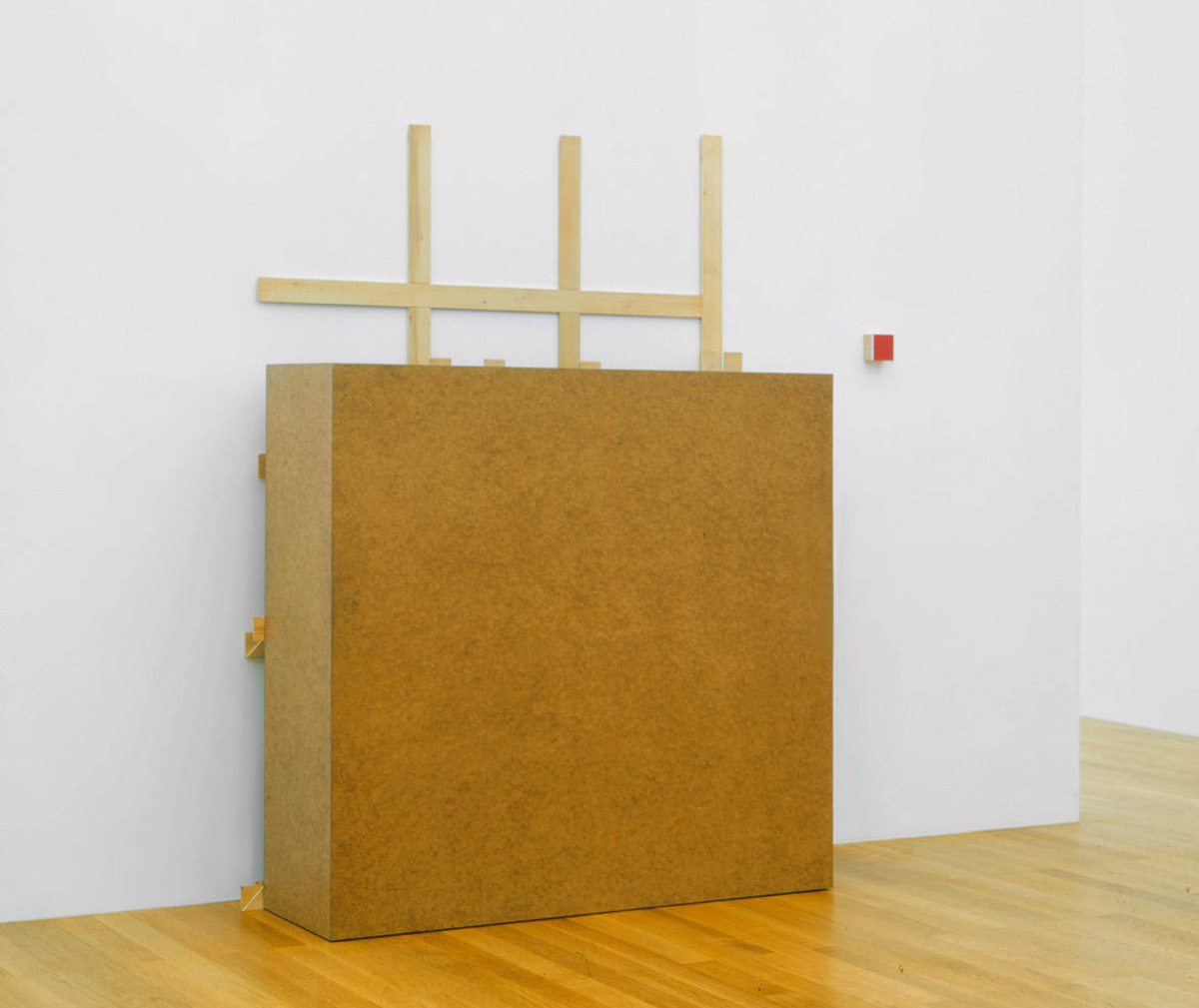Fibreboard, stretcher bars, acrylic on plywood
287 x 202 x 65 cm
10.8 x 10 x 6.8 cm (red wooden cube)
Kunstmuseum Liechtenstein, Vaduz
Imi Knoebel's DDR from 1988 consists of a kind of hardboard cuboid, its front face presenting a large square. Behind this three-dimensional body is a close-packed array of stretcher elements, some protruding beyond the cuboid form. While the body has the appearance of a block, the stretcher elements resemble a grid or lattice—an unwieldy situation whose associations are augmented by the title of the piece, DDR (the German abbreviation for the German Democratic Republic). At the same time, the situation is reminiscent of a warehouse in which the materials are, however, inaccessible due to the cramped arrangement. To one side, just above this material composition, hangs a little square of plywood, its front face prepared with a white acrylic ground and painted in strong red. This red painting strengthens the impression of the (as yet) unpainted state of the cuboid and stretcher.
In DDR, Knoebel operates with the fundamental devices of painting: the stretcher, support and paint. The focus is on the potentiality of what is to be created, the potential nature of painting. Also with regard to the choice of title, the question is: what fertile environment is needed to enable artistic creation?
The search for the essence of painting and the question as to how it can continue to exist are characteristic of Knoebel's work. He received his training at a time of social and political upheaval, when a new definition of art was being called for in the context of the nascent student protest movement. In 1964, Knoebel began studying with his friend Rainer Giese (who, like Klaus Wolf Knoebel, had assumed the first name Imi) at the State Academy of the Arts in Düsseldorf, where Joseph Beuys was a charismatic teacher. The privilege of being able to work in a room of their own allowed Imi & Imi to distance themselves radically from Beuys's other students. The two artists confronted the latters' figurative works with an abstract language of art founded upon geometric shapes, drawing their inspiration particularly from Kazimir Malevich's suprematism.
Christiane Meyer-Stoll / Franziska Hilbe
"I thought: everything has been done already [...] Yves Klein has painted his canvas blue, Lucio Fontana has cut slashes into his. What's left? If you want to do something, to stay alive, you have to think of something at least as radical."
Imi Knoebel
